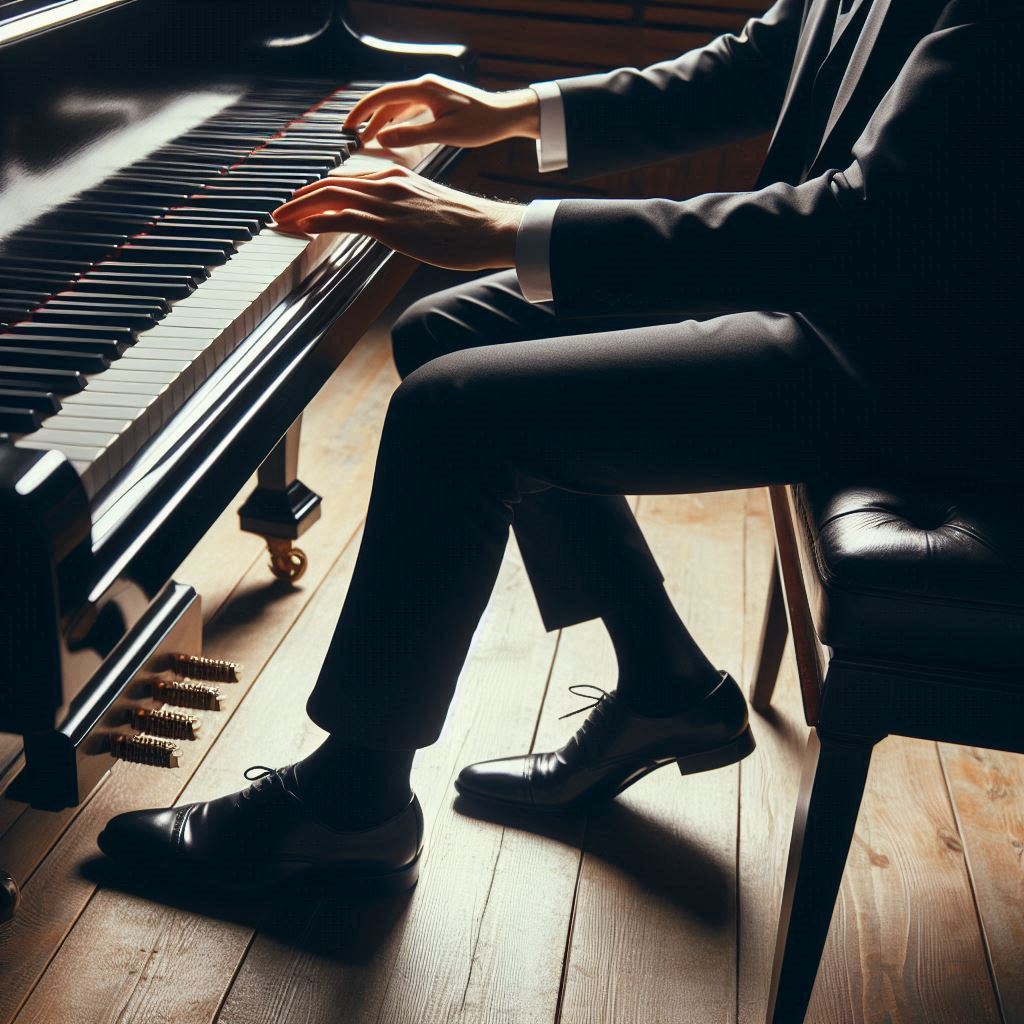Introduction
Piano pedaling is an essential aspect of piano playing that adds depth, richness, and nuance to your music. Mastering the art of pedaling can significantly enhance your performance, allowing you to create more expressive and dynamic interpretations. Whether you’re a beginner or an experienced pianist, improving your pedaling technique is crucial for achieving a professional sound. In this article, we’ll explore various tips and techniques to help you improve your piano pedaling.
Thank you for reading this post, don't forget to subscribe!Understanding the Piano Pedals
Before diving into techniques, it’s essential to understand the three main pedals on a piano and their functions:
- The Sustain Pedal (Damper Pedal): Located on the right, it lifts the dampers off all the strings, allowing them to vibrate freely and sustain the sound.
- The Soft Pedal (Una Corda Pedal): Located on the left, it shifts the keyboard slightly so that the hammers strike fewer strings, producing a softer and more muted sound.
- The Sostenuto Pedal: Located in the middle, it sustains only the notes that are being held down when the pedal is pressed, allowing selective sustain.
The Sustain Pedal (Damper Pedal)
The sustain pedal is the most commonly used pedal. It enriches the sound by allowing notes to resonate longer. Proper use of the sustain pedal can create legato connections between notes and enhance the overall texture of the music.
The Soft Pedal (Una Corda Pedal)
The soft pedal changes the timbre and volume of the piano. It’s used to create a more intimate sound and is particularly effective in delicate passages and quiet dynamics. Mastering the use of the soft pedal adds subtlety and nuance to your playing.
The Sostenuto Pedal
The sostenuto pedal is less commonly used but is essential for certain pieces. It allows specific notes or chords to be sustained while others are played staccato or without sustain. Understanding how and when to use this pedal can greatly expand your expressive range.
Basic Pedaling Techniques
- Pedal Timing: The most fundamental aspect of pedaling is timing. Ideally, the pedal should be pressed immediately after a note or chord is played and released just before the next one to avoid blurring the sound.
- Foot Placement: Ensure your foot is positioned comfortably on the pedal, using the ball of your foot to press down. Keep your heel on the floor to maintain control.
Timing and Coordination
- Synchronizing Pedal and Hands: Practice coordinating your foot movements with your hands. This synchronization is crucial for clean and precise pedaling.
- Delayed Pedaling: Delayed pedaling, or legato pedaling, involves pressing the pedal slightly after playing the keys. This technique helps maintain clarity while connecting notes smoothly.
Half-Pedaling and Partial Pedaling
- Half-Pedaling: This technique involves pressing the pedal halfway down to partially lift the dampers. It creates a lighter, less sustained sound and is useful for creating subtle effects.
- Partial Pedaling: Experiment with different depths of pedaling to achieve varying degrees of sustain and resonance. This technique requires fine control and sensitivity.
Pedaling for Different Styles and Periods
- Baroque and Classical Music: Use the pedal sparingly in Baroque music, focusing on clarity and articulation. In Classical music, pedaling should be light and precise, enhancing but not overwhelming the texture.
- Romantic and Impressionist Music: Romantic and Impressionist pieces often require more extensive and expressive use of the pedal. Experiment with varying pedal depths and timing to achieve the desired emotional effect.
Common Pedaling Mistakes and How to Avoid Them
- Over-pedaling: Avoid keeping the pedal down for too long, which can result in a muddy sound. Practice lifting the pedal frequently to maintain clarity.
- Incorrect Timing: Ensure the pedal timing complements the music. Practice slowly to refine your coordination and timing.
Practicing Pedaling Techniques
- Isolated Practice: Focus on practicing pedaling separately from your hands to develop control and sensitivity. Gradually integrate pedaling into your playing.
- Slow Practice: Slow practice allows you to pay attention to pedal timing and coordination. This method helps build muscle memory and precision.
Listening and Analyzing Professional Pianists
- Study Recordings: Listen to recordings of renowned pianists and analyze their pedaling techniques. Pay attention to how they use the pedal to enhance musical expression.
- Live Performances: Attend live performances to observe professional pianists’ pedaling techniques in action. This experience can provide valuable insights and inspiration.
Seeking Feedback and Guidance
- Piano Teacher: A piano teacher can provide personalized feedback and guidance on improving your pedaling technique. Regular lessons can help you develop a more refined approach.
- Peer Feedback: Playing for peers or participating in masterclasses can also provide constructive feedback and new perspectives on your pedaling.
Conclusion
Improving your piano pedaling technique is essential for achieving greater musical expression and control. By understanding the functions of the pedals, practicing basic and advanced techniques, and studying the use of the pedal in different musical styles, you can enhance your overall piano performance. Remember, consistent practice and seeking feedback are key to mastering the art of piano pedaling.
FAQs
What is the primary function of the sustain pedal? The sustain pedal lifts the dampers off all the strings, allowing them to vibrate freely and sustain the sound, creating a richer and more resonant tone.
How can I improve my pedal timing? Practice synchronizing your foot movements with your hands and use slow practice to refine your coordination and timing.
What is half-pedaling, and when should I use it? Half-pedaling involves pressing the pedal halfway down to partially lift the dampers, creating a lighter, less sustained sound. Use it for subtle effects and to avoid over-pedaling.
How should I approach pedaling in Baroque and Classical music? Use the pedal sparingly in Baroque music to maintain clarity. In Classical music, pedaling should be light and precise, enhancing the texture without overwhelming it.
Why is it important to listen to recordings of professional pianists? Listening to professional recordings provides insights into effective pedaling techniques and helps you understand how to use the pedal to enhance musical expression.
How can I avoid over-pedaling? Practice lifting the pedal frequently to maintain clarity and avoid a muddy sound. Focus on refining your pedal timing and coordination.



